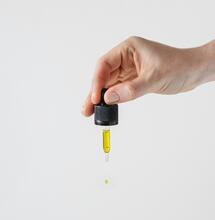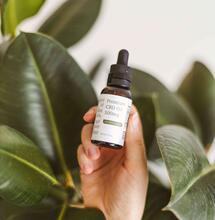Types of medical cannabis.

Cannabis contains hundreds of bioactive molecules, but two main active constituents are used for medicinal purposes. These are Delta-9-Tetrahydrocannabinol or THC. Cannabidiol or CBD.
Medicinal cannabis includes any form of cannabis used for therapeutic purposes. Many medicinal cannabis products differ in their chemical components, potency, formulation, and quality.
Medicinal cannabis products can vary and include:
- Plant-derived, e.g. a cannabis plant extract
- Made synthetically in a lab
The three primary forms of medicinal cannabis products are:
- Isolate: products contain purely isolated cannabinoids comprising THC or CBD only.
- Full-spectrum: products contain a range of the components of the cannabis plant in various concentrations. These products are generally high in THC or CBD and lower in levels of other minor phytocannabinoids.
- Broad-spectrum: products contain a scope of cannabinoids and other cannabis components but no THC.
Medicinal cannabis comes in many forms, including:
- Capsules
- Tablets
- Edibles
- Creams
- Crystals/extracts
- Flower
- Lozenges
- Oil
- Oro-mucosal sprays
- Tinctures
Over-the-counter medicinal cannabis products include:
- Low dose CBD: Products that contain at least 98% CBD and less than 1% THC)
- CBD only: Products containing CBD only (at least 98%).
A registered doctor must prescribe cannabis products containing higher levels of THC.
What to look for
Most medicinal cannabis products are unregistered medicines and will vary in quality. Always ask for a certificate of analysis. This will verify the cannabinoid content and verify that the levels of impurities like heavy metals and pesticides meet current guidelines.
Medicinal cannabis products can involve plant-produced or synthetic cannabinoids.
Plant-derived products are raw cannabis plant materials from a strict government-compliant environment. The product will come from cloned plants to allow for reliable cannabinoid content. This plant material would be prescribed to be vaporised or smoked by the user.
Plant-derived products can also come from liquids (oils or tinctures). These are made by extracting cannabinoids from the plant using solvents such as ethanol or carbon dioxide. Oils and tinctures are typically swallowed or placed under the tongue via a dropper.
Other sublingual methods of ingestion are also under development. Concentrated plant extracts can be contained within capsules and swallowed much like other medicines. Other extracts may be made into gels, creams or balms to allow for topical application directly to the skin.
Plant-derived products vary in levels of cannabinoids. Products that contain mostly THC, CBD or a combination of both also generally contain lesser amounts of other trace cannabinoids, including CBG, CBN and CBC, as well as terpenoids, flavonoids and other naturally occurring plant compounds.
Whole or 'full-spectrum' plant extracts are produced to preserve the balance of all cannabinoids and terpenoids in the plant. Other extracts may be filtered and manufactured to maximise the amount of one distinct cannabinoid, such as CBD.
There is a hypothesis that the medicinal benefits of cannabinoids, such as CBD, are enhanced when carried in a full-spectrum extract – you will often hear this called 'the entourage effect.
Synthetically produced cannabinoids can be produced under lab conditions using organic chemistry. THC, CBD, and other cannabinoid molecules created synthetically are identical to natural phytocannabinoids found in the plant. The benefits of synthetically produced cannabis medicine are that it may avoid many issues and variables associated with growing cannabis plants.











